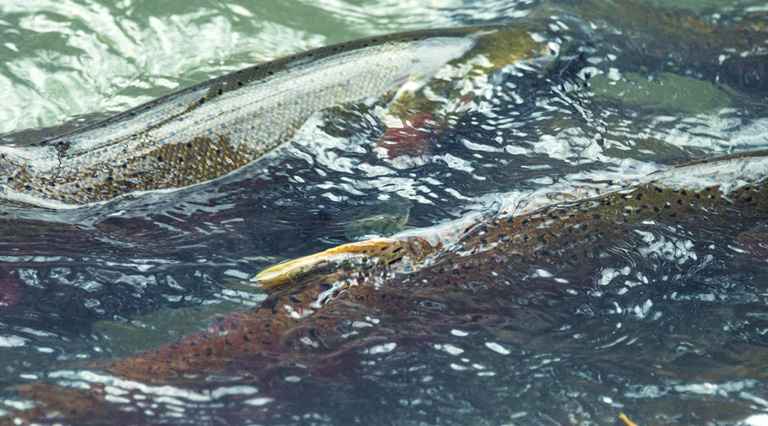The Chehalis Basin Strategy is at work now and delivering results for Basin communities, economies, and ecosystems.
Currently, we’re investing about $23 million in state funding on small- to mid-scale local projects throughout the Chehalis Basin. These projects are designed to reduce flood damage and restore habitat, and include strategies like floodwalls, restoration, and floodplain reconnection. Together with our partners, we’re investing in proven projects that work, including:
- Evacuation routes and early flood warning systems
- Flood protections for homes, businesses, and critical infrastructure like roads, sewers, water supplies, and wastewater treatment plants
- Raised farm pads that safeguard farms, livestock and farm equipment
- Fish passage barrier corrections that have opened 100+ miles of habitat for multiple steelhead and salmon species, including 55+ miles that support Spring chinook salmon
- 70+ habitat restoration projects, including restoration work for the benefit of multiple species of aquatic life

Featured Projects
Barrier and culvert corrections: Addressing flooding and fish together
Sometimes the best solutions are also the simplest. This is especially true when it comes to solutions that work to both restore habitat and reduce flood damage.
At-a-glance:
- Fish passage barriers like road culverts can block salmon, steelhead, and other aquatic species from getting up and downstream to feed and lay eggs.
- Correcting barriers restores access to fish habitat and improves road crossings that become dangerous during storms and floods.
- 40 total barriers have been removed or corrected through the Chehalis Basin Strategy.

Montesano Wastewater Treatment Plant: Protecting communities from sewage spills during floods
Community members know better than anyone what projects are most important to keep them safe. The Chehalis Basin Strategy helps by investing in community-driven projects.
At-a-glance:
- The Montesano Wastewater Treatment Plant was in serious danger of being breached during flooding, potentially sending millions of gallons of raw sewage all the way to Grays Harbor.
- Natural, log-based protections were installed in the river.
- During January 2022 floods, the protections saved the community from $40 million worth of damages.
Oregon spotted frog restoration: Partnering with landowners to restore habitat for threatened frogs
Landowners are vital partners in restoring habitat for aquatic life across the region. The Chehalis Basin Strategy is a 100% voluntary effort—we partner with landowners who are excited about restoring beautiful aquatic habitat on their land.
At-a-glance:
- Oregon spotted frogs are native to Washington and listed as threatened.
- Frogs and their eggs were found on a 37-acre parcel along Salmon Creek.
- The Strategy is collaborating with a local rancher to conserve and improve the frog’s habitat, without taking ranching lands out of production.

Cloquallum Creek: Managing erosion to protect property and habitat
Oftentimes, what’s good for people is also good for fish and other aquatic life. This includes slowing streambank erosion in areas where it’s currently happening and putting both property values and habitats at risk.
At-a-glance:
- A resident’s home and septic field were in danger of eroding into Cloquallum Creek.
- The streambank was stabilized by planting native plants and installing stabilizing habitat logs.
- The home and septic system were successfully protected during the January 2022 flooding, and no erosion took place.